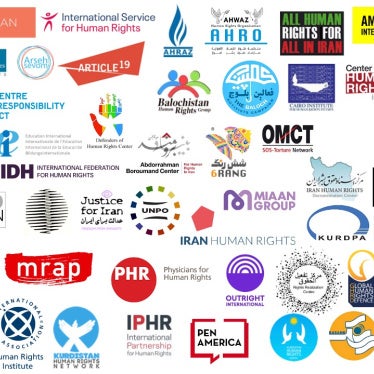The Israel Defense Forces’ (IDF) investigation of the Gaza beach explosion that killed eight Palestinian civilians and wounded dozens is incomplete because it excludes important evidence, Human Rights Watch said today. Human Rights Watch researchers met yesterday with Israeli Major-General Meir Kalifi, who led the internal IDF investigation, to discuss its findings. After the meeting, Human Rights Watch reiterated its call for an independent investigation into the deaths.
The meeting revealed that the IDF’s conclusion that it was not responsible for the deaths on the beach was based exclusively on information gathered by the IDF and excluded all evidence gathered by other sources. Its investigation centered on mathematical models said to show a “statistical impossibility” that a shell fired by IDF artillery was responsible for killing the civilians. The reliability of such a conclusion should be evaluated by independent experts with access to the underlying data.
“An investigation that refuses to look at contradictory evidence can hardly be considered credible,” said Marc Garlasco, senior military analyst at Human Rights Watch. “The IDF’s partisan approach highlights the need for an independent, international investigation.”
Kalifi told Human Rights Watch that Palestinians “have no problem lying,” and that the IDF discounted information gathered from any Palestinian information sources in its investigation. The day after the incident, the IDF asked the official Palestinian security liaison office to provide evidence for testing, but later dismissed the evidence provided, which consisted of 155mm shrapnel, both new and old, and dirt from the beach and crater. When offered evidence collected first-hand by Human Rights Watch researchers in Gaza, the general either called it into question or declined to accept it.
The IDF also dismissed as “unimportant” evidence gathered by Human Rights Watch indicating that the IDF’s suggested timeline surrounding the fatal incident is flawed. Yet, the IDF originally claimed that the timing of the incident was the most important factor absolving it of responsibility. According to the IDF, the eight civilians were killed after the IDF shelling ceased at 4:50 p.m. on June 9, 2006.
However, evidence collected by Human Rights Watch researchers and many independent journalists on the ground in Gaza indicates that the civilians were killed within the time period of the shelling. That evidence includes computerized hospital records that show children injured at the beach were treated by 5:12 p.m., and hand-written hospital records that show they were admitted at 5:05 p.m. In light of the 20-minute round trip drive between the hospital and the beach, this evidence suggests that the blast that caused the family’s death occurred during the time of the IDF shelling.
During yesterday’s meeting, Kalifi confirmed that the IDF had removed and tested one piece of shrapnel from one of three injured Palestinians moved to Israel and that the test results revealed that it was weapons-grade alloy, but not from a 155mm shell. He stated that the IDF was not removing shrapnel from the other injured Palestinians. However, last night an Israeli news report contradicted this information, stating that the IDF had removed two additional pieces of shrapnel from one of the other injured and found them likely to have come from a 155mm shell. The IDF spokesperson today acknowledged the removal and testing of one additional piece of shrapnel, but claimed that there were no test results yet.
Kalifi also dismissed artillery fuse shrapnel removed by Palestinian doctors from a 19-year-old man injured in the blast, and examined by Human Rights Watch. He questioned the chain of custody, stating that anyone could take shrapnel and dip it into the blood of the injured. He also questioned the decision of Palestinian doctors to remove shrapnel from the injured that were later sent to Israel, saying he assumed it was to “cover evidence” that might help the IDF.
“If the Israeli allegations of tampered evidence are to be believed, many Palestinians would have to have engaged in a massive and immediate conspiracy to falsify the data,” said Garlasco. “The conspirators – witnesses, victims, medical personnel and bomb disposal staff – would have had to falsify their testimony, amend digital and hand-written records, and dip shrapnel into a victim’s blood. It beggars belief that such a huge conspiracy could be orchestrated so quickly.”
During the two-and-a-half hour meeting with Kalifi, the IDF agreed with Human Rights Watch that it is possible that unexploded ordnance from a 155mm artillery shell fired earlier in the day could have caused the fatal injuries. The IDF fired more than 80 155mm shells in the area of the beach on the morning of the incident. Sand would increase the possibility of a fuse malfunction leading to a dud shell that may have sat in the sand waiting to be set off. The shelling between 4:31 p.m. and 4:50 p.m. could have triggered a dud shell, as could the human traffic on the beach that afternoon.
The IDF has fired more than 7,700 shells at northern Gaza since the Israeli withdrawal in September 2005, creating a problem of unexploded ordnance in heavily populated areas.







